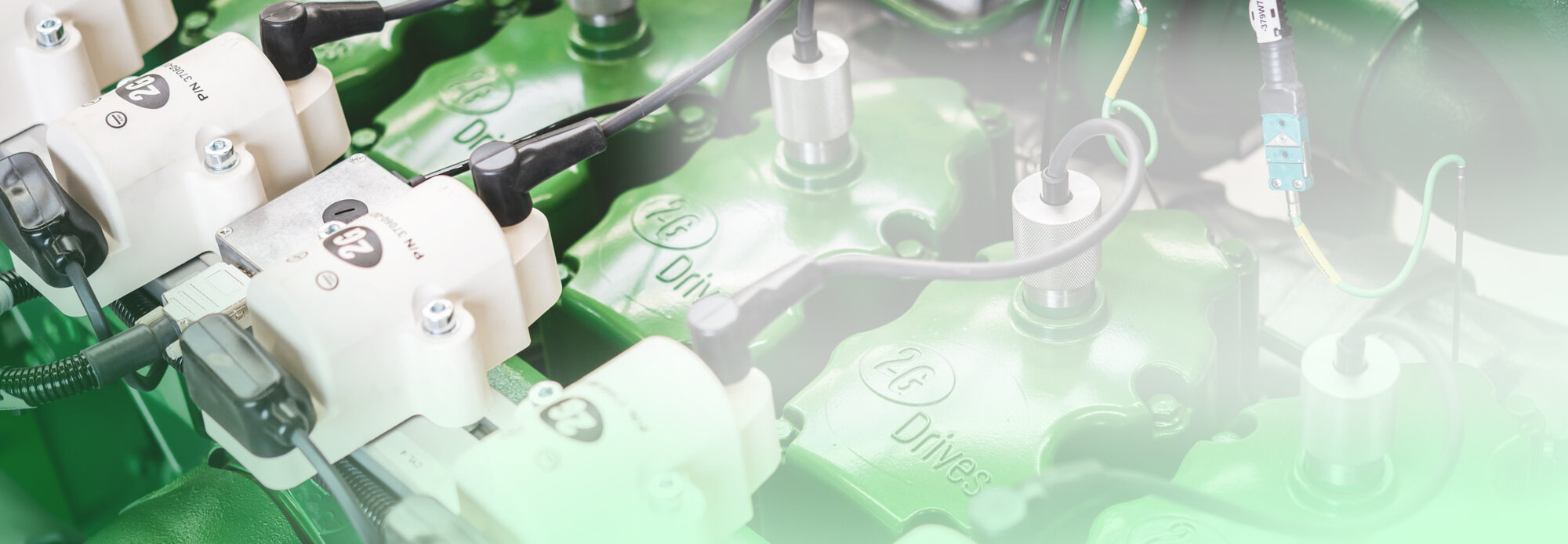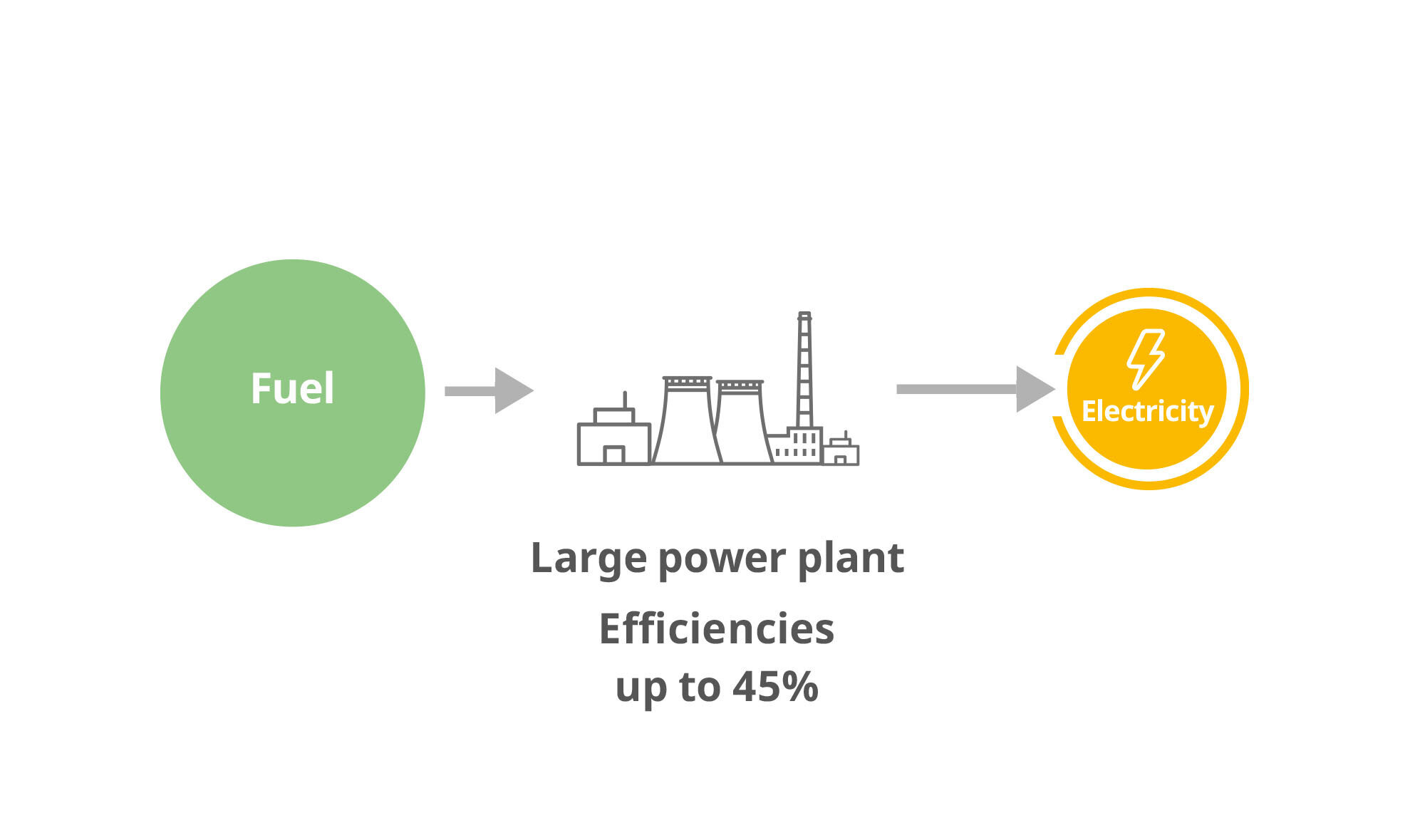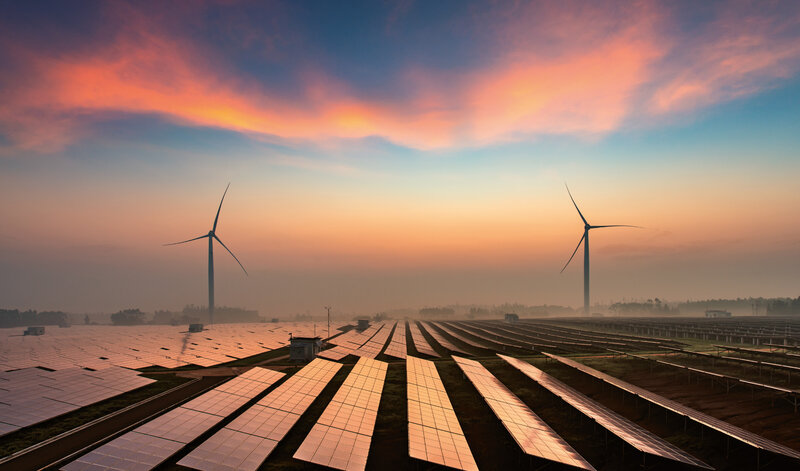
Combined Heat & Power
Everything you need to know at a glance
On this page, we introduce you to the technology behind combined heat and power, explain how it works and show which role it can play in the energy supply structure of today and in the future.
What is combined heat and power (CHP)?
Combined heat and power (CHP) is the combined generation of electrical and thermal energy, more commonly called electricity and heat. Unlike separate generation which often entails significant energy losses, CHP shines with an enormous efficiency resulting in low fuel consumption, and elevated economic efficiency.
The Principle of combined heat and power generation

Conventional power plants (central)
In conventional power generation in large centralised power plants, the heat generated escapes unused into the atmosphere.

Combined heat and power generation (decentral)
CHP also harnesses the waste heat generated during electricity production. In this way, significantly higher efficiency values are achieved than with separate generation.


What is meant by "decentralised energy supply"?
CHP is a means of decentralised energy production, meaning that the energy is usually produced directly at the site of its consumption. Unlike a centralised power station that constitutes a node in a centralised energy supply infrastructure and feeds the infrastructure with energy, the energy production of combined heat and power generation systems can be completely independent of the public energy network. This increases supply security since the generation capacities are spread out.
How does CHP work?
The main components of a CHP are the engine, generator, and heat exchanger as well as the command and control units. Normally, additional components such as an exhaust system, ventilation devices etc. are also part of the system. The exact equipment depends on the specific application.
The combustion engine drives the generator who, in turn, generates electricity. The heat generated by burning fuel inside the combustion engine is not disposed of - as would be the case in an automobile, for example - through the cooling systems without being used but is made available to the heating network through a heat exchanger. This way, up to 98 % of the primary energy is utilised, namely in the form of electricity and heat.
However, combined heat and power generation systems are not only capable of providing heating or warm water. The production of process heat through steam, hot air or thermal oil is also possible. This is mostly applied in industrial production processes.
For engine-driven combined heat and power systems, the following generally applies: The electrical output of a CHP directly corresponds to its electrical efficiency - in this case, more usually is more.
Combined heat and power systems can be operated on fossil as well as regenerative fuels. Liquid fuels, such as domestic heating oil, vegetable oil or biodiesel, can be used in compression ignition engines. Gaseous fuels such as natural gas, liquefied gas, and biogas (as well as lean gases with small shares of burnable methane like sewage gas, landfill gas or firedamp) are used in Otto engines, dual fuel engines or gas turbines.
In the context of the progressing energy transition, hydrogen is a prime candidate to become a commonly used climate-neutral energy source. It can be produced using excess wind and solar energy. Combined heat and power generation systems by 2G as they are now already capable of producing heat and electricity using nothing but 100% hydrogen.
When does the use of combined heat and power production pay off?
Combined heat and power systems are available in different output categories. The product portfolio of 2G consists of solutions from 20 to 4,500 kW covering a wide range of applications. Since each combined heat and power system by 2G can be specifically tailored to its intended application and is planned as part of a holistic solution, considerations of economic efficiency play a key role from the get-go.
CHP can be operated with a focus on heat or focused on electricity. A focus on electricity means that the configuration and operation of the CHP are dependent on the electricity demand. With a heat focus, on the other hand, the required heat is the deciding factor. Demands for additional energies like cooling, for example, can also be covered if necessary.
Usually, the target is to have the highest possible rate of system utilisation which leads to the most complete exploitation of available production capacities. However, the need for flexibly activated regulation and balancing capacities is growing in parallel to the expansion of renewable energies who, by nature, are subject to capacity fluctuations - and CHP perfectly fulfills this need.
Can CHP be considered renewable?
The centerpiece of a combined heat and power system is a reciprocating piston engine. Whether the energy produced with CHP can be considered renewable depends entirely on the fuel.
However, the fact remains: Even when fossil fuels such as natural gas are used, CHP far exceeds the efficiency of conventional energy production. Additionally, the harmful gases inevitably produced by landfills and sewage treatment plants can be used to produce energy and thus be withdrawn from the environment - two wins at once.
Therefore, CHP is already contributing to a significant reduction of greenhouse gas emissions - and thanks to the possibility of a simple conversion of a 2G CHP to operate on hydrogen, the way is already paved for net-zero. Bottom line: Cogeneration is more than a bridge technology - it is the backbone of the energy transition.













